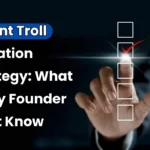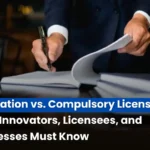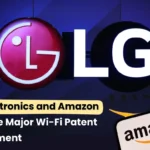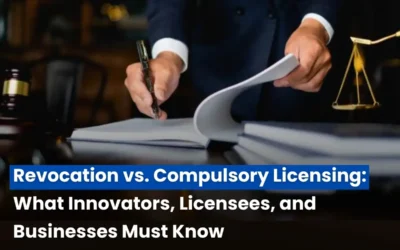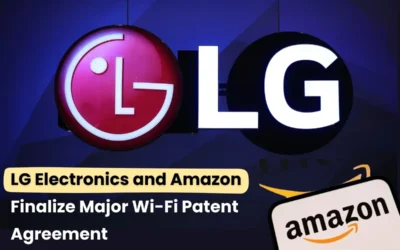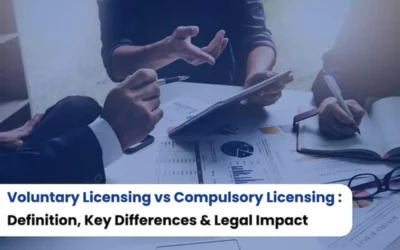
With competition in global markets now intensifying, patents are highly valued property and may bring in pretty penny, end. It can be an individual inventor or even a large corporate entity, if one is envisioning thoughts to monetize the same through licensing, sales, or strategic partnership options, it will open up options in new avenues; however while extending your outreach and monetizing your patents all over the globe, protection turns out to be the critical determinant. Patent protection and monetization at global stage is very essential for every business.
A patent gives the inventor the right to exclusivity
No one may use, make, or sell without permission granted to the inventors. After licensing or selling rights to world markets, you are then facing the challenge of how to make sure your patents are protected across borders.
The article will guide you through the all-important points of how to protect your patents while capitalizing on global potential. Discussion involves legal strategies and international patent protection, keeping an eye out for the best practice of licensing and enforcing your rights. These guidelines can help protect your inventions and exploit them to their full potential.
Why Patent Protection Is Very Crucial When Licensing or Selling Your Inventions to Foreign Countries?
Before expounding on the strategies of patent monetization and protection, let’s talk about the reason why you need patent protection when you license or sell your inventions to foreign countries.
Global Patent Monetization Risks
The risk of infringement goes up once you have decided to market your patents around the world. A competitor can then steal or reverse-engineer the invention and take advantage of its use, and among the risks, there are:
You are sure to encounter patent infringement in foreign markets where the patent laws could be different from that of your home country, hence invading or violating your patent without your knowledge about the same. Your licensee may abuse your invention or breach the terms of the contract in case your licensing agreement is not well constructed. Loss of Exclusivity-If your multi-country patents are not adequately protected in several or some countries, then your competitor is going to make it easily accessible to rights over patented technology. Most of these risks would be dramatically reduced by the approaches summarized below, which in turn would ensure almost impossible probabilities of failure for patent monetization in thousands of worldwide jurisdictions, all of which is addressed in much greater detail throughout this module.
Patent Protection in Patent Monetization across Various Geographical Territories
Based on this, we can now closely consider some essential steps you ought to undertake with respect to protecting patents from global aspects of the necessity of protection while monetizing patent protection.
1. Patent protection in key markets
In exploiting your patents all over the world, make sure you have patents covered in those markets you intend to penetrate. Every country and region has its laws as well as machinery for enforcing those laws on patents. For that reason, be aware of how patents work in each of the territories to which you will apply your attention.
File International Patents
You will need to file a patent for sale in international markets to which you predict your invention will appeal or to which you will out license your patented creation. These global systems-overview:
Patent Cooperation Treaty
The Patent Cooperation Treaty allows you to submit one patent application and, in effect, to file the same in more than 150 countries. The PCT facilitates the process of acquiring international patent rights and also provides you with a couple of years’ extra time to decide whether your product would be commercially viable in the markets of a particular country. You have 30 months’ buffer immediately on the submission of your PCT application, wherein you are ready to enter a given country for a national or regional patent.
European Patent Convention (EPC)
If your intention is to file within the regions of Europe, this European Patent Convention is crafted in such a manner that a person can file with one application filed with the European Patent Office and get that application validated within most European regions so that cross-filing complications across European regions can be decreased.
Regional Filings
Apart from the PCT and EPC, patents can be filed in a single country or regional system. Some examples include ARIPO, used for regional patent protection of a number of countries in the African region and EAPO, the Eurasian region.
2. Patent Laws in Multiple Jurisdictions
Any form of monetization process of patents worldwide requires you to be aware of the patent law of other countries whose territories you would expect protection. Patent laws can vary enormously over jurisdictions, and such can directly affect how your intellectual property could be protected as well as defended.
Patentability standards
patentability standards that differ from one jurisdiction to another vary. For example, some jurisdiction does not allow patents of any form of inventions such as software-related patents or business method patents.
Protection Period
Usually, most patents are protected for 20 years. There is, however some variation. In certain countries, some sort of extensions are provided in case a particular condition arises with respect to certain types of patents like pharmaceuticals.
Enforcement
Patent enforcement is not the same case since it is prone to jurisdictions in place. While some countries really practice strict enforcements through local courts, it is not very easy in other places to enforce one’s rights in patent licensing.
3. Prepare strong licensing agreements
Licensing agreement is one of the most common sources of revenue generation from a patent. The licensing agreement merely grants the right to others to make, use or sell your patented invention. It can give one a steady revenue stream but involves careful planning of the terms in order to have one’s rights protected.
Components of a Licensing Agreement
A good composed licensing agreement is not only meant to safeguard intellectual property rights but also fair decompensation to all efforts done. Basic characteristics which need to be covered in it include:
- Scope of license: Elaborate on exactly what rights are transferred to the licensee. Using, selling, or manufacturing the patent right may be among those rights that would be explained. If, however, such restrictions are present and those include territories, regions, or sectors where it may be operated or the license can operate explain all those above.
- Royalties’ rates and terms of payment: Provide how royalties are computed: either by sales, net profits, or flat rate. Special provision should be given on when and how the payment is to be made. Include provisions for regular audits that royalties are properly paid.
- Exclusivity: Whether the license agreement would be exclusive or non-exclusive. The exclusive license would give rights to use the patent within a particular territory whereas the non-exclusive license would give authorization to license the patent with third parties. Quality control provisions the licensee should ensure that the products manufactured or sold based on your patent have certain standards of quality. This will protect your reputation and ensure that the final product meets your specifications. You need to include enforcement provisions in the licensing agreement for a patent infringement. Identify who would be taking legal actions in case of such infringements through a licensing contract. Sometimes you may require that the enforcement is by the licensee; sometimes you need control over enforcing.
4. Apply Non-Disclosure Agreements
Never disclose your confidential information while negotiating a licensing agreement or discussing your patented invention with any potential partner, investor, or licensee. An NDA is a legally binding contract that protects the confidential information exchanged in the course of the discussion. NDA will prevent the licensee from disclosing or using the information outside of the terms agreed to with you. The most crucial parts are details shared of your invention that may not have been patented yet or even completely disclosed, especially during the negotiation phase.
5. Monitoring and Enforcement of Patents
Once you have licensed your patents, then you always have to watch out for infringement and ensure that the licensees live by the terms of the agreement. Patents are useless if not enforced.
Patent Watch Services
They’d also have their patent watch services that would likely tell you, “Hey, someone else had filed another patent that borders on what is yours.” They can help you to spot infringement while it’s small scale and allow you to do something about it.This calls for action promptly whenever infringement occurs to your patent rights. This would mean sending a cease-and-desist letter, filing a case, or being able to work out with your licensee in solving the infringement problem. Be sure to place in your licensing agreements who will observe patent infringement and the method that should be used to enforce it.
6. Involvement of Patent Lawyers and Experts
Most likely, you would need highly experienced and knowledgeable patent attorneys who understand the world of international patent law to assist you in monetizing your patents overseas. A patent attorney will guide you through detailed steps on filing patents in every country or negotiating broad licensing agreements and drawing legal protections against infringement. There are two fundamental elements involved in protecting and maximizing the value of your intellectual property through patent protection and monetization worldwide: proactive actions like filing patents worldwide, drafting powerful licensing agreements, using NDAs, and closely monitoring your patents to minimize the risks of infringement and misuse.The word should be appreciated in the direction that patent protection is not completed while making use of it, but the process just continues on due to constant scanning, legal depth, and practical care. And along with a potent use of protection, this will definitely unlock possible value out from patents and thereby your ideas transforming into gold across the world of countries.
Conclusion
In principle, protecting and monetize your patents abroad is a strategic approach. Initially, acquire patent rights in major markets through national, regional, or PCT systems. Frame your license arrangements flexible enough to respond to in-country market conditions and jurisprudence to realize your intellectual asset return on investment. Aggressive enforcement equipment must be launched in every country to guard your rights. By employing exclusive and non-exclusive license agreements, you are able to earn money without relinquishing your control over your patents. With the right balance of global licensing options and legal safeguarding, you are able to safely protect and benefit from your patents all around the world.
